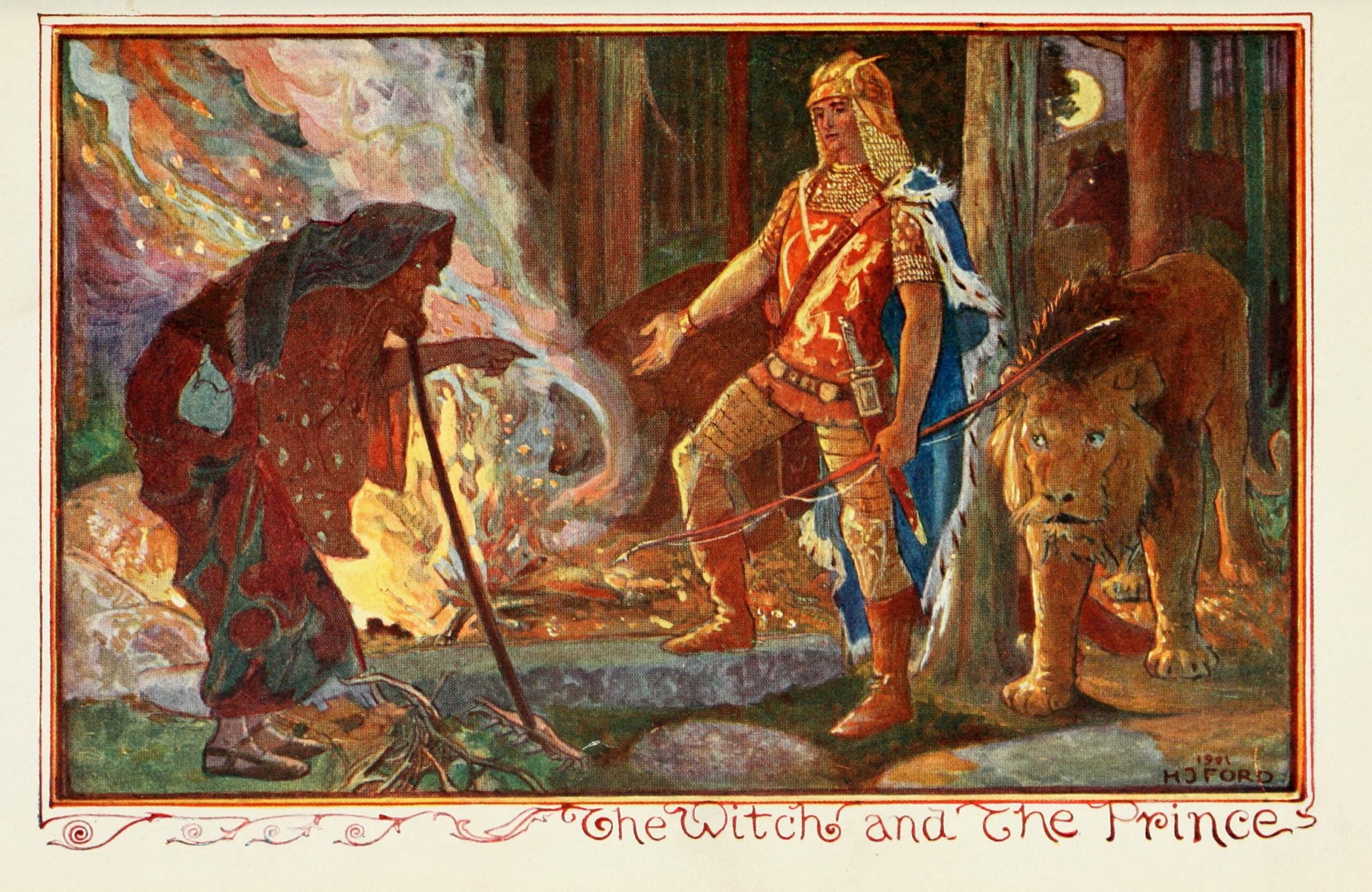I originally intended this for a published product. That may still happen, but I can’t afford a a lot of art, and each beast would likely need new art. When I pitched it a couple of times the people I pitched it to also mentioned the art issue. That said, I may still eventually put this in a product, or they will revise the Beast Master ranger making it irrelevant. Either way, I would like some feedback on these so I am putting them out there for people to see.
Beasts are part of the natural world. This is one of the things which helps distinguish them from other creatures or monsters in Dungeons and Dragons. In a magical world, the dragon may be a part of the natural world, but in our normal world they are confined to myths and legends. The wolf or the lion, however, exist in both the natural world and the magical one.
In the natural world, biology, microchemistry and ecology define aspects of these beast. In a magical world, there are properties beyond those sciences. The elemental and magical nature of a mystical realm must also affect the creatures living in it.
With that in mind, we will present a few elementally tied beasts. These are innately magical as the world they live in. The fire, wood, air and water are all tied to them in different ways. They are familiar but with a range of powers abilities fitting the elements.
A note on usage
The beasts listed here are certainly viable monsters. They have a range of powerful abilities for beasts and make for a thematic addition to several encounters. A fight on the side of a volcano might include some Bronze Monkeys, or a snowy wasteland might be stalked by White Lions.
That said, most of these are also powerful candidates for beast companions. Players of Beast Master Rangers often struggle to find the right choice of companion. The list presented here is largely intended to provide more options for those players.
Bronze Monkey
The Bronze Monkey is found in or near volcanic mountains, usually in more tropical regions. They are small monkeys with pelts of bronze plates.
Bronze Monkeys live communally, often sharing the burden of raising their young. They are not overtly hostile, most of the time, but can become enraged if their living spaces are invaded. Their ability to absorb and redirect fire makes them remarkably dangerous, especially in large groups fighting in or near an active volcano.
In the past, they were hunted for the skins which were infused with bronze. This has fallen off as iron and steel became more prevalent. They now exist in isolated pockets throughout the world.
Note: I am aware of the Brass Monkey jokes. Move along.
Bronze Monkey
Small beast, unaligned
Armor Class 14
Hit Points 6 (2d6)
Speed 30 ft., climb 30 ft.
STR 12 (+1)
DEX 14 (+2)
CON 11 (+0)
INT 4 (-3)
WIS 12 (+1)
CHA 6 (-2)
Senses
Passive Perception 11
Languages —
Challenge 1/4 (50 XP)
Pack Tactics. The Bronze Monkey has advantage on an attack roll against a creature if at least one of their allies is within 5 feet of the creature and the ally isn’t incapacitated.
Actions
Bite. Melee Weapon Attack: +1 to hit, reach 5 ft., one target. Hit: 1 (1d4 +1) piercing damage.
Absorb fire: Once per short rest, the Bronze Monkey can activate this ability as a reaction. The Monkey when hit by fire damage takes some of the incoming energy, lessening its effect on itself and storing it for your next melee attack. They have resistance to the fire damage until the start of your next turn. In addition, the first time the Bronze Monkey hits with a melee attack on their next turn, the target takes an extra 1d6 fire damage.
Cobblestone Rat
The Cobblestone Rat is found in the roots of large cities. They are large for rats but not overly large, with grey stony hides. Rats are attracted to cities but exist all over the place, anywhere humans congregate. The Cobblestone Rat is tied to the stones of a city and is shaped by that city’s structures.
Fortunately, they tend to live in the lower catacombs under a city. They are larger than normal rats and, in numbers, are frightful to behold. A foolish city worker will not live long wnough to regret the decision of trying to burn a Cobblestone Rats nest out.
The Cobblestone Rat mystical ties to the stone of the city allow it to traverse it like no other being. They pass through worked stone like water, and leave no trace. They also blend with those stones making them hard to find or catch. These creatures are tied to the elemental nature of cities and they are a reflection of their city’s power.
Cobblestone Rat
Small beast, unaligned
Armor Class 12
Hit Points 7 (2d6)
Speed 30 ft.
STR 7 (-2)
DEX 15 (+2)
CON 11 (+0)
INT 8 (-1)
WIS 10 (+0)
CHA 4 (-3)
Skills Perception +3, Stealth +4
Senses
Darkvision 60 ft., Passive Perception 10
Keen Smell. The rat has advantage on Wisdom (Perception) checks that rely on smell.
Languages —
Challenge 1/4 (50 XP)
Pack Tactics. The Cobblestone Rat has advantage on an attack roll against a creature if at least one of the rat’s allies is within 5 feet of the creature and the ally isn’t incapacitated.
City Camouflage: The Cobblestone Rat has advantage on Dexterity (Stealth) checks made to hide in cities.
City Glide. The Cobblestone Rat can burrow through nonmagical, worked stone earth parts of the city. While doing so, the Cobblestone Rat doesn’t disturb the material it moves through. This is at half their normal movement.
Actions
Bite. Melee Weapon Attack: +4 to hit, reach 5 ft., one target. Hit: 4 (1d4 + 2) piercing damage.
Mistborn Fox
The legend of the mysterious Mistborn Fox is found in the wild flat grasslands. These foxes are small, with faded red fur. They are tied to the mix of air water in mists. They pass through the grasslands and nothing really can stop them. They are known for their playful nature. While they are predators, they are not dangerous to humans normally.
Given their abilities, many farmers fear gaining their attention. There is not a chicken coop made which can keep them out, and no dog can threaten them. As a result, many farmers living in the fox’s hunting grounds simply do not raise chickens.
Despite their occasional wispy appearance, they are not spirits or ghosts. They are able to transition between flesh and mist at will, which is why they are able to pass unhindered through almost any obstacle, and attempts to strike them mostly fail. This also explains why they are almost completely without fear.
Mistborn Fox
Tiny beast, unaligned
Armor Class 12
Hit Points 3 (1d6)
Speed 40 ft., climb 30 ft.
STR 10 (+0)
DEX 15 (+2)
CON 10 (+0)
INT 3 (-4)
WIS 12 (+1)
CHA 7 (-2)
Skills Perception +3, Stealth +4
Senses
Passive Perception 13
Keen Smell. The Mistborn Fox has advantage on Wisdom (Perception) checks that rely on smell.
Languages —
Challenge 1/4 (50 XP)
Mist Form. The Mistborn Fox can enter a hostile creature’s space and stop there. It can move through a space as narrow as 1 inch wide without squeezing.
Damage Resistance: Bludgeoning, Piercing, and Slashing from Nonmagical Attacks
Actions
Claws. Melee Weapon Attack: +0 to hit, reach 5 ft., one target. Hit: 1 slashing damage.
Rain Touched Flying Snake
The Rain Touched Flying Snake is a rare breed of an already rare animal. Their skin has deep blue and green scales. They were revered as favored by the gods in some jungles, making their nests in old temple ruins. These feather serpents fly through the air with some ease and are largely harmless to people. When agitated or frightened, this changes. The poison of these animals is potent.
The major difference between this breed and other flying snakes is it’s more mystical ties. The the rain touched Flying Snake can extract poisons and neutralize them. This makes them largely immune to poison themselves and they can extract it from other creatures.
Rain Touched Flying Snake
Tiny beast, unaligned
Armor Class 14
Hit Points 7 (2d6)
Speed 30 ft., fly 60 ft., swim 30 ft.
STR 4 (-3)
DEX 18 (+4)
CON 11 (+0)
INT 2 (-4)
WIS 12 (+1)
CHA 5 (-3)
Senses
Blindsight 30 ft., Passive Perception 11
Languages —
Challenge 1/4 (50 XP)
Flyby: The snake doesn’t provoke opportunity attacks when it flies out of an enemy’s reach.
Damage Immunity: Poison
Condition Immunity: Poisoned
Neutralize Poison: Once per short rest, the Rain Touched Flying Snake can remove the effects of poison, whether on an individual or neutralizing it in a liquid.
Actions
Bite. Melee Weapon Attack: +6 to hit, reach 5 ft., one target. Hit: 1 piercing damage plus 7 (3d4) poison damage.
Fire Hawk
The Fire Hawks are something of a natural blight. They are beautiful hawks with a heat shimmer that trails them. In the dark, when in flight, you can see a slight flicker of red flame. They hunt in a given area for years, then travel as a flock to a location seemingly at random. Their coming is often tied to forest and brush fires as they find a new home.
Despite their fiery nature and the danger they represent, the Fire Hawks are not apt to attack people. They are predators, however, and they do hunt small creatures in the wild.
Fire Hawk
Small beast, unaligned
Armor Class 12
Hit Points 7 (2d6)
Speed 10 ft., fly 60 ft.
STR 6 (-2)
DEX 14 (+2)
CON 10 (+0)
INT 3 (-4)
WIS 14 (+2)
CHA 5 (-3)
Skills Perception +4
Senses
Passive Perception 14
Keen Sight. The hawk has advantage on Wisdom (Perception) checks that rely on sight.
Languages —
Challenge 1/8 (25 XP)
Damage Immunity: Fire
Pack Tactics. The Fire Hawk has advantage on an attack roll against a creature if at least one of the hawk’s allies is within 5 feet of the creature and the ally isn’t incapacitated.
Actions
Beak. Melee Weapon Attack: +4 to hit, reach 5 ft., one target. Hit: 4 (1d4 + 2) piercing damage. If the target is a creature or a flammable object, it ignites. Until a creature takes an action to douse the fire, the target takes 5 (1d10) fire damage at the start of each of its turns.
This is my part one. I didn’t want to post 14 pages of material in a single blog post. That is a lot. I hope people enjoy this. I will post the rest next week.



Have you seen the Mystical Companions (if I recall the title correctly) book from Troll Lord Games? They’ve got a version for 5e that looks like it might be of interest to you.
I will add it to my to be read list.